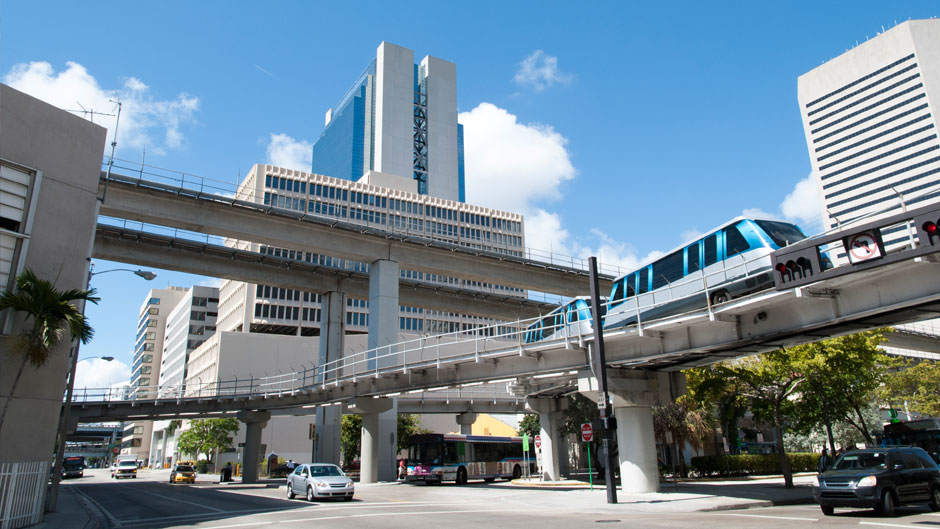While locals in Miami can barely keep up with $2,000-a-month, one-bedroom apartments, and 30-minute commutes for a job down the street, the record-breaking number of Latin American migrants entering South Florida is overwhelming the region’s resources.
In the last year alone, the United States received an unparalleled 2.3 million migrants at the southern border, with Cubans, Nicaraguans, and Venezuelans accounting for 24 percent of that figure, according to the Council on Foreign Relations. Haitians are also a large part of the recent influx to the U.S., especially through the Florida Keys, though many are often repatriated to the Caribbean country.
After the high point of the pandemic, the rise in immigration became especially pronounced as a result of many Latin American countries exhausting their resources, rates in violence and poverty increasing, or domestic political tensions heightening.
Though Miami is often a place of refuge for many Latin American immigrants, it is also seeing its own challenges in the areas of housing, transportation, education, health care, and more.
“Miami is very expensive now compared to other urban areas in the US, and it doesn’t seem like conditions will change in the near future,” said Michael French, professor and chair of health management and policy at the University of Miami Patti and Allan Herbert Business School.
“Florida doesn’t seem interested in incentivizing public transportation or building more infrastructure to make options more appealing. Traffic congestion and long commutes are exactly what we signed up for,” said French, whose research specializations are health economics and transportation policy.
In terms of housing, city and county officials have expressed difficulty in providing affordable housing to residents. Ron Book, chair of the Miami-Dade County board in charge of the Homeless Trust funds, recently adopted a “hard-line” policy when it comes to sheltering migrants ahead of locals, the Miami Herald reported.
According to Andrea Heuson, a professor and co-director of real estate programs in the Miami Herbert Business School, the real estate market in Miami faces some unique challenges compared to other U.S. cities. And these issues add difficulty in providing affordable housing.
“In Miami, we have a very well-defined market boundary out west called Krome Avenue,” Heuson said. “There are many attacks on that boundary, trying to move it westward so that more urban development can take place, and just as many people defending it as it’s protecting the Everglades. The Trump tax cut and our state being open during COVID also made a lot of wealthy people in places like New York and Massachusetts, where a lot of the rich pay high state taxes, fuel the housing market in Miami by purchasing properties here.”
Even earning an income is difficult with the increased amount of traffic congestion on the roads. The primary means of public transportation in the city include city buses, the Metrorail, and the Metromover, though all three are extremely limited in their reach within the city. According to French, without more policies to build additional public transportation and to nudge people to choose other means of transportation than a car, routes will continue to seriously lag.
“You can provide financial or in-kind benefits to people who carpool and add more carpool lanes on major highways, and then maybe raise the taxes on gas and larger vehicles to make driving less financially appealing,” French suggested.
“All these options are largely distasteful to most people, but the alternative is even worse traffic jams and a commute that used to take a half-hour now being an hour-and-a-half. So, it becomes a trade-off between the convenience of a personal vehicle and longer times spent driving,” he added.
Many immigrants coming to Miami often live and commute with families already living here, according to Heuson. However, with conditions like these testing locals and their options, some may have to consider moving northward within the state or moving out of Florida entirely until more affordable housing options are available.
“It takes a good couple of years to even build affordable housing because they have to get the land, get an architect, and do a bunch of other things in the process,” she said. “However, there are about 17 acres of property acquired by Miami-Dade up for redevelopment, and every single residential building going into that area will have affordable housing.”
Aside from housing and transportation, health care and education are also being tested both in the city and the state, making Miami an even more difficult option for migrants to begin a new life in the U.S.
According to HealthInsurance.org, Florida decided not to expand its Medicaid program for this fiscal year, yet possesses the highest concentration of people enrolled in Affordable Care Act programs, leaving most immigrants who come to the U.S. uninsured for long periods of time.
And so far into the 2022-2023 school year, Miami-Dade County Public Schools reported in January that more than 14,000 migrant children have been enrolled in its schools, overwhelming an already strained and overcrowded system.
State and federal responses to the influx of Latin American migrants, as well as the growing challenges within Florida, show that some measures have been taken to ameliorate these issues. However, as French and Heuson pointed out, the effects this record-breaking migration adds to a city already faced with challenges should earn much more widespread attention.
“A lot of the issues we’re seeing now in South Florida are challenges we will have to eventually address with creative and effective policies,” said French. “But this isn’t just a Miami problem—it’s a national dilemma.”

